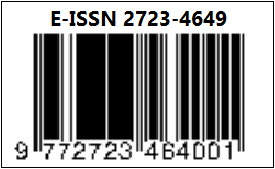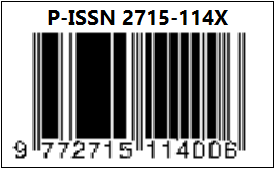PROFIL MISKONSEPSI SISWA PADA MATERI SUHU DAN KALOR
DOI:
https://doi.org/10.55681/nusra.v4i4.1763Keywords:
A Web-Based Four Tier Diagnostic Test, Heat And Temperature, MisconceptionAbstract
Misconception is a mismatch between the concept that a person believes and the scientific concept according to experts. The occurrence of misconceptions can affect one's knowledge of the next concept. This study aims to describe the profile of students ' misconceptions and find out the difficulties experienced by students on the material heat and temperature. This survey research was conducted on class X MA students totaling 24 students. Data were obtained through a web-based four tier diagnostic test consisting of 10 questions. Students' answers were categorized into 3 categories, namely understanding the concept, misconceptions, and not understanding the concept. The results showed that students had misconceptions with an average percentage of 41%. Students have the most misconceptions in the sub-material of the effect of heat on temperature changes with a percentage of 66%. Based on the results of the interviews, it was found that the average student had difficulty in several sub-materials, namely the concepts of specific heat, temperature, expansion, and the effect of heat on changes in temperature and phase. This research needs to be followed up to overcome students' misconceptions on heat and temperature.
Downloads
References
Abdullah, R. (2018). 7 in 1 Pemrograman Web untuk Pemula: Cara Cepat dan Efektif Menjadi Web Programmer. Elex Media komputindo.
Alwan, A. A. (2011). Misconception of heat and temperature among physics students. Procedia - Social and Behavioral Sciences, 12, 600–614.
Asyhari, A., & Silvia, H. (2016). Pengembangan Media Pembelajaran Berupa Buletin dalam Bentuk Buku Saku untuk Pembelajran IPA Terpadu. Jurnal Ilmiah Pendidikan Fisika Al-Biruni, 5(1), 1–13.
Budiarti, I. S., Suparmi, Sarwanto, & Harjana. (2017). Students’ conceptual understanding consistency of heat and temperature. Journal of Physics: Conference Series, 795(1).
Fariyani, Q., & Rusilowati, A. (2015). Pengembangan Four-Tier Diagnostic Test untuk Mengungkap Miskonsepsi Fisika Siswa SMA Kelas X. In JISE (Vol. 4, Issue 2).
Gurel, D. K., Eryilmaz, A., & McDermott, L. C. (2015). A review and comparison of diagnostic instruments to identify students’ misconceptions in science. Eurasia Journal of Mathematics, Science and Technology Education, 11(5), 989–1008.
Hidayah, P., & Muchtar, Z. (2022). Pengembangan tes diagnostik berbasis web pada materi larutan elektrolit dan nonelektrolit. Educenter : Jurnal Ilmiah Pendidikan, 1(6), 570–579.
Ni’mah, S. M., Kusairi, S., Supriana, E., & Fisika, P. (2019). Profil Miskonsepsi Siswa SMA pada Materi Pembelajaran Suhu dan Kalor.
Öz, H. , & Özturan, T. (2018). Computer-based and paper-based testing: Does the test administration mode influence the reliability and validity of achievement tests? 14(1), 67–68.
Rinaldi, R. A., Yulita, I., & Fitriyah, D. (2022). Analisis Kebutuhan Pengembangan Tes Evaluasi untuk Mengidentifikasi Miskonsepsi Siswa pada Materi Bilangan Kuantum dan Konfigurasi Elektron. Student Online Jurnal, 3(1), 681–687.
Wiyat Purnanto, A., Suryawan, A., Andriani, A., & Darwiastuti, B. R. (2018). Studi Eksplorasi Dan Analisis Kebutuhan Terhadap Tes Berbasis Komputer.
Yuliana, I. (2023). Kajian Literatur: Miskonsepsi dan Metode Identifikasinya. Jurnal Pendidikan Fisika Undiksha, 13(1), 267–275.
Yuliati, Y. (2017). Miskonsepsi Siswa pada Pembelajaran IPA serta Remediasinya. 2(2), 50–58.
Downloads
Published
How to Cite
Issue
Section
License
Copyright (c) 2023 NUSRA: Jurnal Penelitian dan Ilmu Pendidikan

This work is licensed under a Creative Commons Attribution-ShareAlike 4.0 International License.














